Directions (1-5): In the following questions two quantities are given for each question. Compare the numeric value of both the quantities and answers accordingly.
Q1.Quantity I: x² – 6x + 8 = 0
Quantity II: y² + 2y – 8 = 0
(a) Quantity I > Quantity II
(b) Quantity I < Quantity II
(c) Quantity I ≥ Quantity II
(d) Quantity I ≤ Quantity II
(e) Quantity I = Quantity II or No relation
Q2. A man invested Rs. 8000 in scheme A for 4 years at Simple Interest which offers interest rate of 20% p.a and Rs. 7200 in scheme B for 3 years which offers 25% p.a at Simple interest.
Quantity I: Interest earned from scheme A
Quantity II Sum of interest earned from scheme ‘B’ and Rs. 640
(a) Quantity I > Quantity II
(b) Quantity I < Quantity II
(c) Quantity I ≥ Quantity II
(d) Quantity I ≤ Quantity II
(e) Quantity I = Quantity II or No relation
Q3. Sum of speed of boat in downstream and in upstream is 24 km/hr while speed of boat in still water is 200% more than speed of stream.
Quantity I: Time taken to cover 96km downstream
Quantity II: Time taken to cover 60km upstream
(a) Quantity I > Quantity II
(b) Quantity I ≤ Quantity II
(c) Quantity I ≥ Quantity II
(d) Quantity I = Quantity II or No relation
(e) Quantity I < Quantity II
Q4. Quantity I : Find the principal if the compound interest is charged on principal at the rate of 16⅔% per annum for two years and the sum becomes Rs 245.
Quantity II : A sum of Rs 500 amounts to Rs 620 in 4 yrs at simple interest. What will Rs 150 amount to if the rate of interest is same and time period is 2½ yrs.
(a) Quantity I > Quantity II
(b) Quantity II > Quantity I
(c) Quantity I >= Quantity II
(d) Quantity II >= Quantity I
(e) Quantity I = Quantity II or relation can’t be established
Q5. Quantity I: x² – 5x + 4 = 0
Quantity II: y² + 3y + 2 = 0
(a) Quantity I > Quantity II
(b) Quantity I < Quantity II
(c) Quantity I ≥ Quantity II
(d) Quantity I ≤ Quantity II
(e) Quantity I = Quantity II or No relation
Directions (6-10): In the given questions, two quantities are given, one as ‘Quantity I’ and another as ‘Quantity II’. You have to determine relationship between two quantities and choose the appropriate option:
Q6. Ratio between length and breadth of rectangle is 7 : 4 and perimeter of rectangle is 88 cm.
Quantity I – Perimeter of square
Side of square is 6 cm less than length of rectangle.
Quantity II – Circumference of the circle
Radius of circle is 2 cm less than breadth of rectangle.
(a) Quantity I > Quantity II
(b) Quantity I < Quantity II
(c) Quantity I ≥ Quantity II
(d) Quantity I ≤ Quantity II
(e) Quantity I = Quantity II or no relation
Q7. Train ‘P’ running at the speed of 72 km/hr cross a man who running in opposite direction at the speed of 9 km/hr in 20 sec.
Quantity I – Length of platform
Length of train ‘Q’ is 70 meter more than that of train ‘P’ and is running at the speed of 90 km/hr and crosses a platform in 40 sec.
Quantity II – 520 m
(a) Quantity I > Quantity II
(b) Quantity I < Quantity II
(c) Quantity I ≥ Quantity II
(d) Quantity I ≤ Quantity II
(e) Quantity I = Quantity II or no relation
Q8. Marked price of an article is Rs. 1440 and shopkeeper sold it at two successive discounts of 20% & ‘D’% at Rs. 1094.4.
Quantity I – Value of ‘D’
Quantity II – Percentage of discount allowed by shopkeeper on article.
Cost price of an article is Rs. 480 shopkeeper marked it at 12½% above and sold it at Rs. 513.
(a) Quantity I > Quantity II
(b) Quantity I < Quantity II
(c) Quantity I ≥ Quantity II
(d) Quantity I ≤ Quantity II
(e) Quantity I = Quantity II or no relation
Q9. A bag contains seven red balls, three green balls and ‘y’ blue balls. If one ball drawn at random probability of being blue is 3/8.
Quantity I – Probability of all three balls are of different colour.
Three balls taken out from bag at random,
Quantity II – 11/40
(a) Quantity I > Quantity II
(b) Quantity I < Quantity II
(c) Quantity I ≥ Quantity II
(d) Quantity I ≤ Quantity II
(e) Quantity I = Quantity II or no relation
Q10. An amount of Rs. 1043 divided among Veer, Sameer & Gopal. Share of Sameer is 12 times that of Veer, while share of Gopal is 40% more than that of Sameer.
Quantity I – Share of Gopal.
Quantity II – 137½% of share of Sameer.
(a) Quantity I > Quantity II
(b) Quantity I < Quantity II
(c) Quantity I ≥ Quantity II
(d) Quantity I ≤ Quantity II
(e) Quantity I = Quantity II or no relation
Directions (11-15): The following questions are accompanied by two statements (I) and (II). You have to determine which statements(s) is/are sufficient/necessary to answer the questions.
Q11. An article is marked 35% above its cost price, find the cost price of the article.
Statement I: Discount allowed on article is Rs.190 more than profit earned on the article.
Statement II: Ratio of selling price of the article to marked price of the article is 4 : 5.
(a) Statement (I) alone is sufficient to answer the question but statement (II) alone is not sufficient to answer the question.
(b) Statement (II) alone is sufficient to answer the question but statement (I) alone is not sufficient to answer the question.
(c) Both the statements taken together are necessary to answer the question, but neither of the statements alone is sufficient to answer the question.
(d) Either statement (I) or statement (II) by itself is sufficient to answer the question.
(e) Statements (I) and (II) taken together are not sufficient to answer the question.
Q12. Deepak is 20% less efficient than Dharam. Find efficiency of Shivam.
Statement I: Shivam and Dharam working together can complete a piece of work in ![]() days and Deepak and Shivam working together an complete same piece of work in
days and Deepak and Shivam working together an complete same piece of work in ![]() days.
days.
Statement II: Deepak is 60% less efficient than Shivam and Dharam working alone can complete a piece of work in 80 days.
(a) Statement (I) alone is sufficient to answer the question but statement (II) alone is not sufficient to answer the question.
(b) Statement (II) alone is sufficient to answer the question but statement (I) alone is not sufficient to answer the question.
(c) Both the statements taken together are necessary to answer the question, but neither of the statements alone is sufficient to answer the question.
(d) Either statement (I) or statement (II) by itself is sufficient to answer the question.
(e) Statements (I) and (II) taken together are not sufficient to answer the question.
Q13. Asif invested Rs.80000 across two schemes – A & B offering SI in the ratio 5 : 3 respectively. Find total interest earned by him.
Statement I: Rate of interest offered by scheme – B is twice of that of offered by scheme – A and period of investment in both schemes is 4 years.
Statement II: Interest received from scheme – B is Rs.6000 more than interest received from scheme – A.
(a) Statement (I) alone is sufficient to answer the question but statement (II) alone is not sufficient to answer the question.
(b) Statement (II) alone is sufficient to answer the question but statement (I) alone is not sufficient to answer the question.
(c) Both the statements taken together are necessary to answer the question, but neither of the statements alone is sufficient to answer the question.
(d) Either statement (I) or statement (II) by itself is sufficient to answer the question.
(e) Statements (I) and (II) taken together are not sufficient to answer the question.
Q14. Average of present age of Aman, Bhanu and Chaman is 34 years. Find present age of Chaman.
Statement I: Aman’s present age is 100% more than Chaman’s present age and ratio of Bhanu’s age 6 years hence to Chaman’s present age is 3: 2.
Statement II: Sum of Aman’s and Bhanu’s present age is 78 years.
(a) Statement (I) alone is sufficient to answer the question but statement (II) alone is not sufficient to answer the question.
(b) Statement (II) alone is sufficient to answer the question but statement (I) alone is not sufficient to answer the question.
(c) Both the statements taken together are necessary to answer the question, but neither of the statements alone is sufficient to answer the question.
(d) Either statement (I) or statement (II) by itself is sufficient to answer the question.
(e) Statements (I) and (II) taken together are not sufficient to answer the question.
Q15. Ratio of length of train – A and train – B is 4 : 5. Find speed of train – A.
Statement I: Train – A can cross a 500m long platform in 28 seconds and train – A crosses train – B while running in same direction in 54 seconds.
Statement II: Train – B can cross a pole in 15 seconds.
(a) Statement (I) alone is sufficient to answer the question but statement (II) alone is not sufficient to answer the question.
(b) Statement (II) alone is sufficient to answer the question but statement (I) alone is not sufficient to answer the question.
(c) Both the statements taken together are necessary to answer the question, but neither of the statements alone is sufficient to answer the question.
(d) Either statement (I) or statement (II) by itself is sufficient to answer the question.
(e) Statements (I) and (II) taken together are not sufficient to answer the question.
Solutions
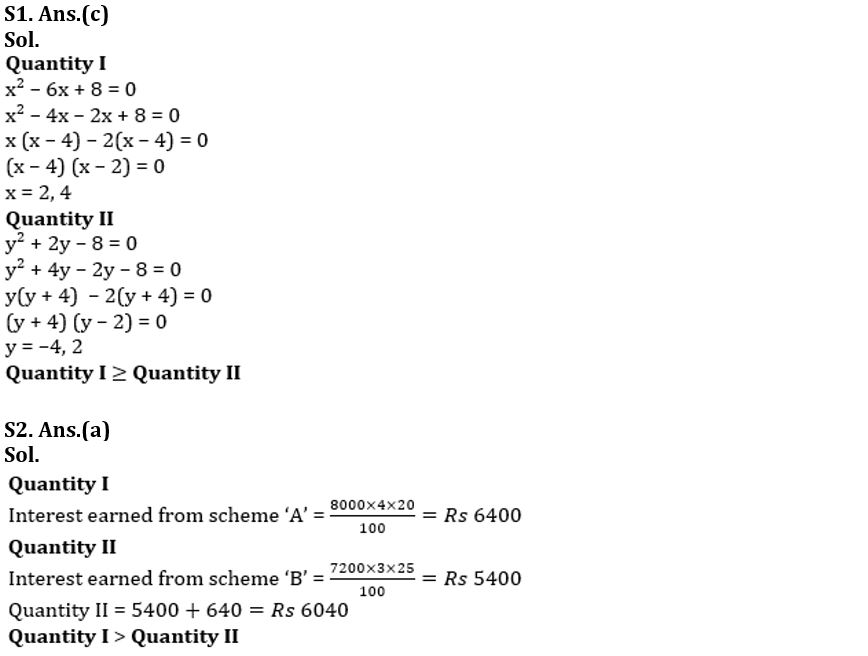
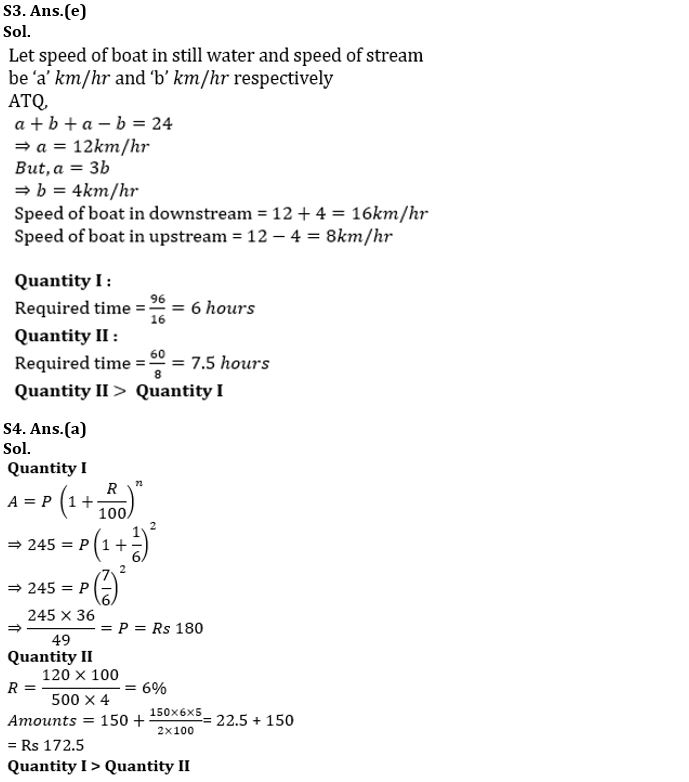
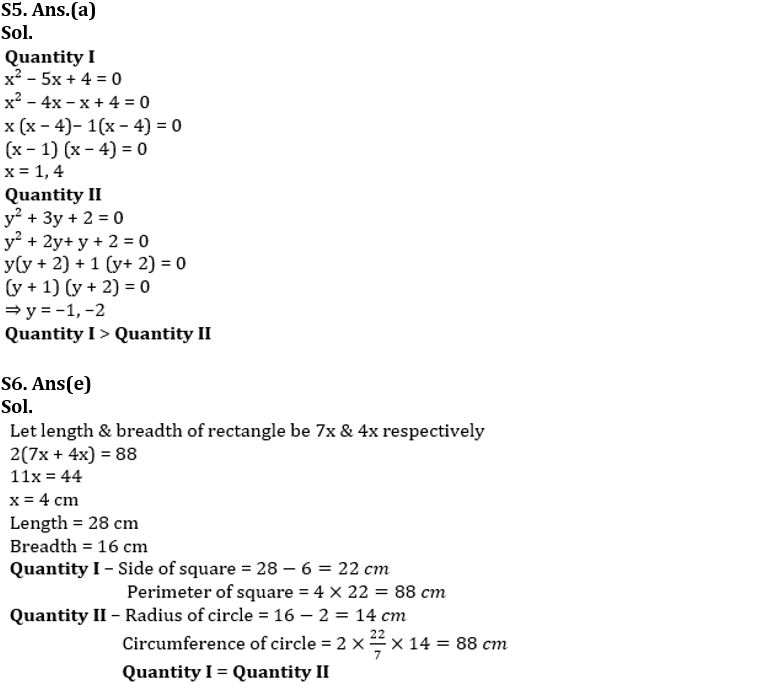
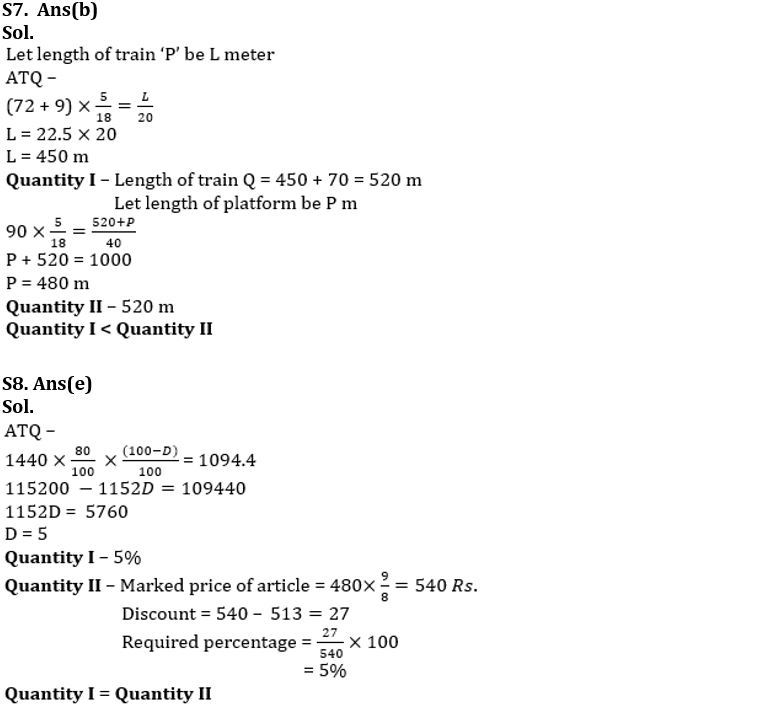
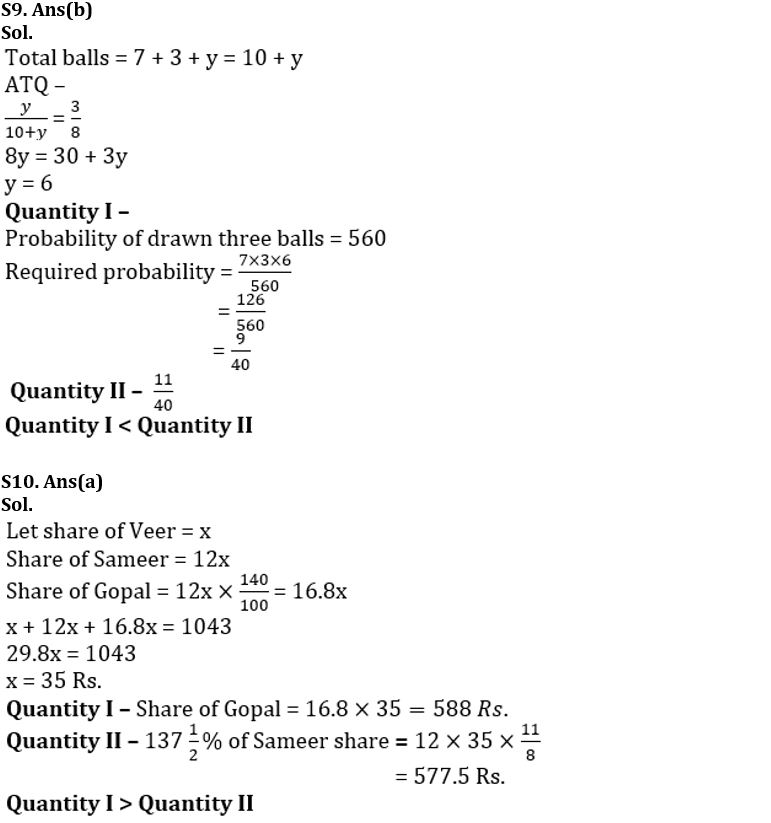
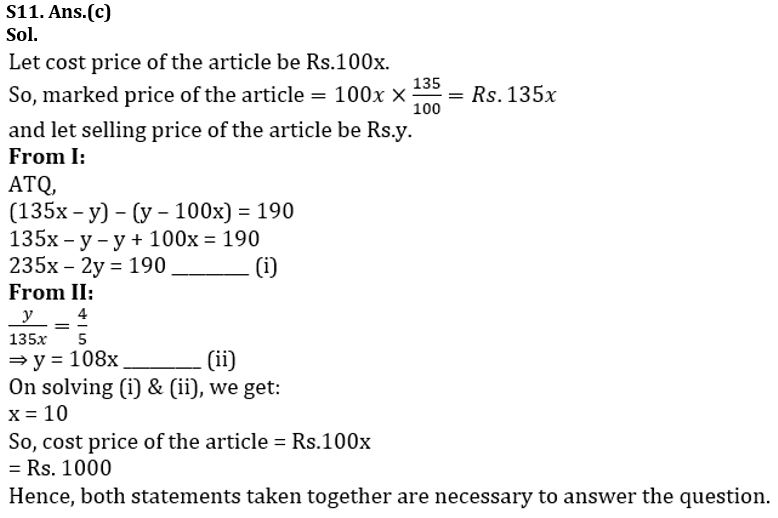
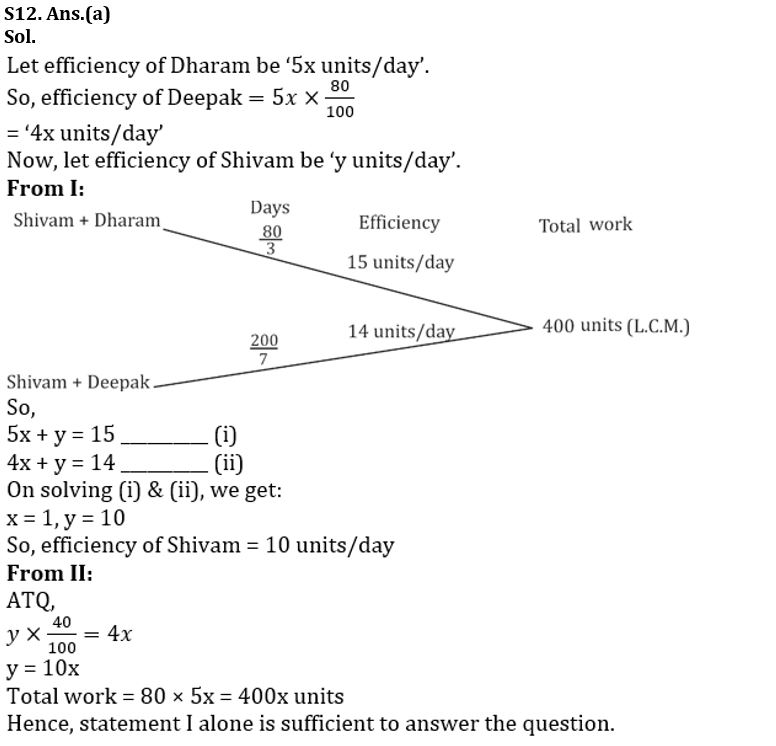
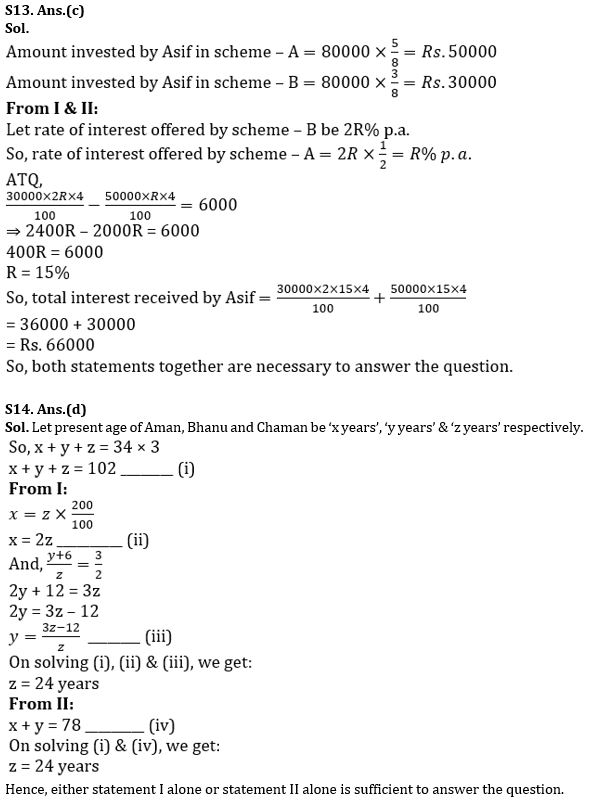
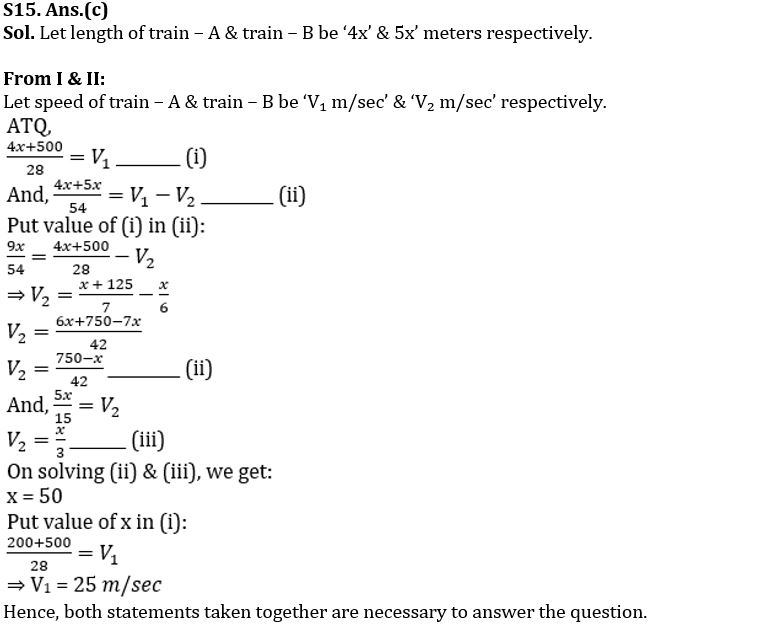


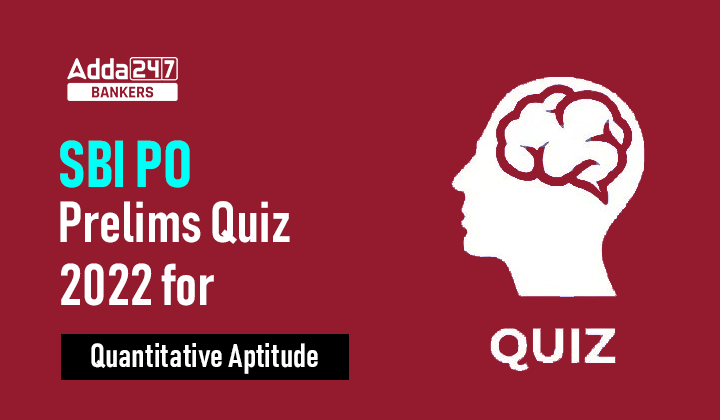
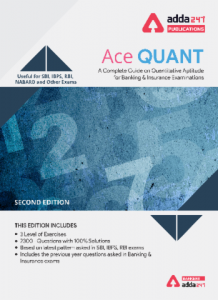

 GA Capsule for SBI Clerk Mains 2025, Dow...
GA Capsule for SBI Clerk Mains 2025, Dow...
 The Hindu Review October 2022: Download ...
The Hindu Review October 2022: Download ...
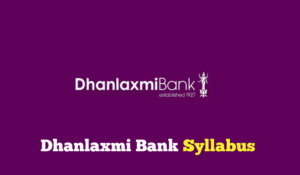 Dhanlaxmi Bank Syllabus 2025, Junior Off...
Dhanlaxmi Bank Syllabus 2025, Junior Off...


